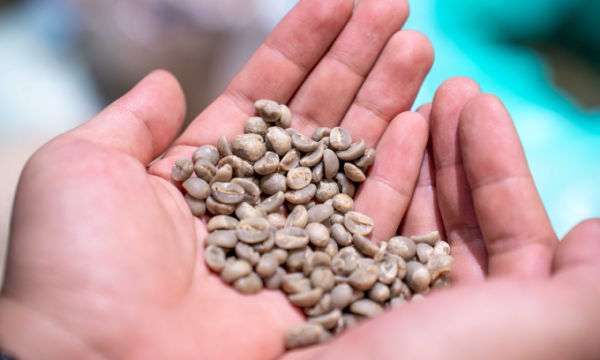
The prices Monday in the Central Highlands provinces of Dak Lak, Gia Lai and Kon Tum were 30% down from the peak of VND135,000 in March.
Prices have been tumbling both globally and in Vietnam in recent months.
Robusta for September delivery is now trading at $3,737 per ton and Arabica at $6,950.
Brazil, the world’s leading coffee exporter, began its harvest in May with yields surpassing expectations, resulting in a sharp increase in global supply.
In Indonesia, rising supply has increased robusta exports, further pressuring global prices.
|
A person holds coffee beans in Hanoi in April 2025. Photo by VnExpress/Hoang Giang |
As global capital flows shift toward the U.S. dollar, a safe-haven asset amid ongoing economic volatility, dollar-priced commodities like coffee have become more expensive for buyers using other currencies, dampening demand and necessitating price corrections.
Coffee sellers are capitalizing on the opportunity to sell quickly to ensure profits, exacerbating the short-term price decline.
The U.S. Department of Agriculture projects Vietnam’s coffee production for the 2025-2026 season to reach 31 million bags, a 6.9% increase from the previous season.
Farmers in key growing localities like Dak Lak and Kon Tum report favorable weather conditions this year, with minimal impacts from climate change, fostering optimism for stable yields.
Coffee plantations replanted four years ago are now entering their high-yield phase, further supporting production expectations.
Vietnam exported 823,900 tons of coffee in the first five months of 2025 for $4.7 billion, according to the Ministry of Industry and Trade.
The average export price has been $5,709 per ton (including processed coffee), reflecting a 63% year-on-year increase.
Major markets such as Germany, Italy, Spain, the U.S., and Japan continue to drive demand.
Emerging markets in the Middle East, Africa and the Americas are increasingly contributing to Vietnam’s coffee export growth.